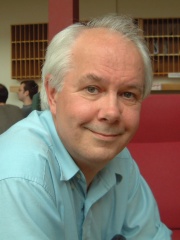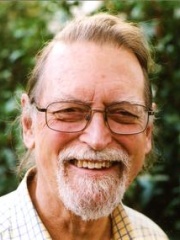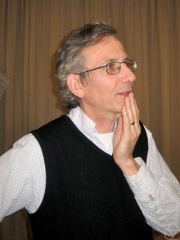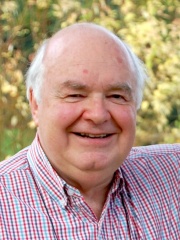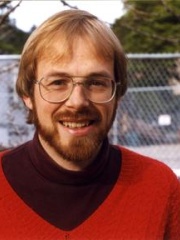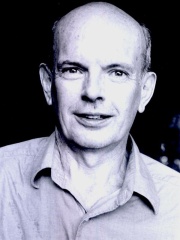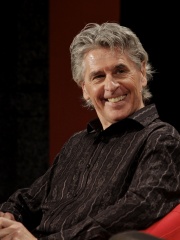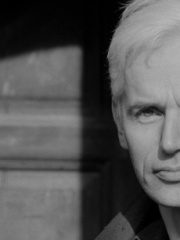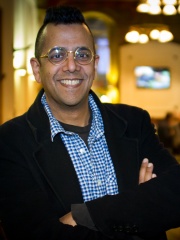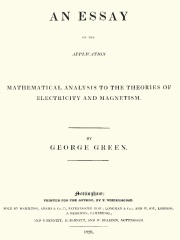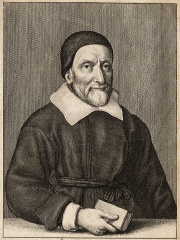



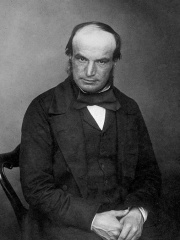
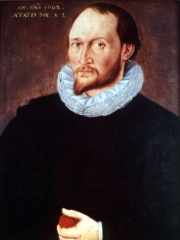
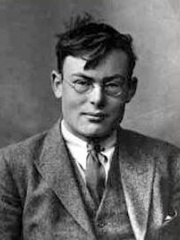
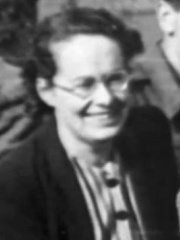
The Most Famous
MATHEMATICIANS from United Kingdom
This page contains a list of the greatest British Mathematicians. The pantheon dataset contains 1,004 Mathematicians, 118 of which were born in United Kingdom. This makes United Kingdom the birth place of the most number of Mathematicians.
Top 10
The following people are considered by Pantheon to be the top 10 most legendary British Mathematicians of all time. This list of famous British Mathematicians is sorted by HPI (Historical Popularity Index), a metric that aggregates information on a biography's online popularity. Visit the rankings page to view the entire list of British Mathematicians.

1. Ada Lovelace (1815 - 1852)
With an HPI of 87.83, Ada Lovelace is the most famous British Mathematician. Her biography has been translated into 111 different languages on wikipedia.
Augusta Ada King, Countess of Lovelace (née Byron; 10 December 1815 – 27 November 1852), also known as Ada Lovelace, was an English mathematician and writer chiefly known for work on Charles Babbage's proposed mechanical general-purpose computer, the analytical engine. She was the first to recognise the machine had applications beyond pure calculation. Lovelace is often considered the first computer programmer. Lovelace was the only legitimate child of poet Lord Byron and reformer Anne Isabella Milbanke. Lord Byron separated from his wife a month after Ada was born, and died when she was eight. Although often ill in childhood, Lovelace pursued her studies assiduously. She married William King in 1835. King was a Baron, and was created Viscount Ockham and 1st Earl of Lovelace in 1838. The name Lovelace was chosen because Ada was descended from the extinct Baron Lovelaces. The title given to her husband thus made Ada the Countess of Lovelace. Lovelace's educational and social exploits brought her into contact with scientists such as Andrew Crosse, Charles Babbage, David Brewster, Charles Wheatstone and Michael Faraday, and the author Charles Dickens, contacts which she used to further her education. Lovelace described her approach as "poetical science" and herself as an "Analyst (& Metaphysician)". When she was eighteen, Lovelace's mathematical talents led her to a long working relationship and friendship with fellow British mathematician Charles Babbage. She was particularly interested in Babbage's work on the analytical engine. Lovelace first met him on 5 June 1833, when she and her mother attended one of Charles Babbage's Saturday night soirées with their mutual friend, and Lovelace's private tutor, Mary Somerville. Though Babbage's Analytical Engine was never constructed and did not influence on the invention of electronic computers, it has been recognised as a Turing-complete general-purpose computer, which anticipated the essential features of a modern electronic computer. Babbage is therefore known as the "father of computers," and Lovelace is credited with several computing "firsts" for her collaboration with him. Lovelace translated an article by the military engineer Luigi Menabrea about the Analytical Engine, supplementing it with seven long explanatory notes. These described a method of using the machine to calculate Bernoulli numbers which is often called the first published computer program. She developed a vision of the capability of computers to go beyond mere calculating or number-crunching, while many others, including Babbage, focused only on those capabilities. Lovelace was the first to point out the possibility of encoding information besides mere arithmetical figures, such as music, and manipulating it with such a machine. Her mindset of "poetical science" led her to ask questions about the analytical engine, examining how individuals and society relate to technology as a collaborative tool. Ada is widely commemorated, including in the names of a programming language, roads, buildings and institutes, as well as programmes, lectures and courses. There are plaques, statues, paintings, literary and non-fiction works.

2. Bertrand Russell (1872 - 1970)
With an HPI of 82.69, Bertrand Russell is the 2nd most famous British Mathematician. His biography has been translated into 125 different languages.
Bertrand Arthur William Russell, 3rd Earl Russell (18 May 1872 – 2 February 1970), was a British philosopher, logician, mathematician, and public intellectual. He influenced mathematics, logic, set theory, and various areas of analytic philosophy. He was one of the early 20th century's prominent logicians and a founder of analytic philosophy, along with his predecessor Gottlob Frege, his friend and colleague G. E. Moore, and his student and protégé Ludwig Wittgenstein. Russell with Moore led the British "revolt against idealism". Together with his former teacher Alfred North Whitehead, Russell wrote Principia Mathematica, a milestone in the development of classical logic and a major attempt to reduce the whole of mathematics to logic (see logicism). Russell's article "On Denoting" has been considered a "paradigm of philosophy". Russell was educated at Trinity College at the University of Cambridge, where he graduated in 1893. He was a pacifist who championed anti-imperialism and chaired the England-based India League. He went to prison for his pacifism during the First World War, and he initially supported appeasing Adolf Hitler's Nazi Germany, before changing his view in 1943, describing war as a necessary "lesser of two evils". In the wake of the Second World War, he welcomed American global hegemony in preference to either Soviet hegemony or no (or ineffective) world leadership, even if it were to come at the cost of using their nuclear weapons. He would later criticise Stalinist totalitarianism, condemn the United States' involvement in the Vietnam War, and become an outspoken proponent of nuclear disarmament. In 1950 Russell was awarded the Nobel Prize in Literature "in recognition of his varied and significant writings in which he champions humanitarian ideals and freedom of thought". He was also the recipient of the De Morgan Medal (1932), Sylvester Medal (1934), Kalinga Prize (1957), and Jerusalem Prize (1963).

3. John Napier (1550 - 1617)
With an HPI of 77.92, John Napier is the 3rd most famous British Mathematician. His biography has been translated into 80 different languages.
John Napier of Merchiston ( NAY-pee-ər; Latinized as Ioannes Neper; 1 February 1550 – 4 April 1617), nicknamed Marvellous Merchiston, was a Scottish landowner known as a mathematician, physicist, and astronomer. He was the 8th Laird of Merchiston. Napier is best known as the discoverer of logarithms. He also invented the "Napier's bones" calculating device and popularised the use of the decimal point in arithmetic. Napier's birthplace, Merchiston Tower in Edinburgh, is now part of the facilities of Edinburgh Napier University. There is a memorial to him at St Cuthbert's Parish Church at the west end of Princes Street Gardens in Edinburgh.

4. George Boole (1815 - 1864)
With an HPI of 76.22, George Boole is the 4th most famous British Mathematician. His biography has been translated into 83 different languages.
George Boole ( BOOL; 2 November 1815 – 8 December 1864) was an English autodidact, mathematician, philosopher and logician who served as the first professor of mathematics at Queen's College, Cork in Ireland. He worked in the fields of differential equations and algebraic logic, and is best known as the author of The Laws of Thought (1854), which contains Boolean algebra. Boolean logic, essential to computer programming, is credited with helping to lay the foundations for the Information Age. Boole was the son of a shoemaker. He received a primary school education and learned Latin and modern languages through various means. At 16, he began teaching to support his family. He established his own school at 19 and later ran a boarding school in Lincoln. Boole was an active member of local societies and collaborated with fellow mathematicians. In 1849, he was appointed the first professor of mathematics at Queen's College, Cork (now University College Cork) in Ireland, where he met his future wife, Mary Everest. He continued his involvement in social causes and maintained connections with Lincoln. In 1864, Boole died due to fever-induced pleural effusion after developing pneumonia. Boole published around 50 articles and several separate publications in his lifetime. Some of his key works include a paper on early invariant theory and "The Mathematical Analysis of Logic", which introduced symbolic logic. Boole also wrote two systematic treatises: "Treatise on Differential Equations" and "Treatise on the Calculus of Finite Differences". He contributed to the theory of linear differential equations and the study of the sum of residues of a rational function. In 1847, Boole developed Boolean algebra, a fundamental concept in binary logic, which laid the groundwork for the algebra of logic tradition and forms the foundation of digital circuit design and modern computer science. Boole also attempted to discover a general method in probabilities, focusing on determining the consequent probability of events logically connected to given probabilities. Boole's work was expanded upon by various scholars, such as Charles Sanders Peirce and William Stanley Jevons. Boole's ideas later gained practical applications when Claude Shannon and Victor Shestakov employed Boolean algebra to optimize the design of electromechanical relay systems, leading to the development of modern electronic digital computers. His contributions to mathematics earned him various honours, including the Royal Society's first gold prize for mathematics, the Keith Medal, and honorary degrees from the Universities of Dublin and Oxford. University College Cork celebrated the 200th anniversary of Boole's birth in 2015, highlighting his significant impact on the digital age.
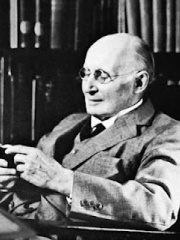
5. Alfred North Whitehead (1861 - 1947)
With an HPI of 73.62, Alfred North Whitehead is the 5th most famous British Mathematician. His biography has been translated into 67 different languages.
Alfred North Whitehead (15 February 1861 – 30 December 1947) was an English mathematician and philosopher. He created the philosophical school known as process philosophy, which has been applied in a wide variety of disciplines, including ecology, theology, education, physics, biology, economics, and psychology. In his early career Whitehead wrote primarily on mathematics, logic, and physics. He wrote the three-volume Principia Mathematica (1910–1913), with his former student Bertrand Russell. Principia Mathematica is considered one of the twentieth century's most important works in mathematical logic, and placed 23rd in a list of the top 100 English-language nonfiction books of the twentieth century by Modern Library. Beginning in the late 1910s and early 1920s, Whitehead gradually turned his attention from mathematics to philosophy of science, and finally to metaphysics. He developed a comprehensive metaphysical system which radically departed from most of Western philosophy. Whitehead argued that reality consists of processes rather than material objects, and that processes are best defined by their relations with other processes, thus rejecting the theory that reality is fundamentally constructed by bits of matter that exist independently of one another. Whitehead's philosophical works – particularly Process and Reality – are regarded as the foundational texts of process philosophy. Whitehead's process philosophy argues that "there is urgency in coming to see the world as a web of interrelated processes of which we are integral parts, so that all of our choices and actions have consequences for the world around us." For this reason, one of the most promising applications of Whitehead's thought in the 21st century has been in the area of ecological civilization and environmental ethics pioneered by John B. Cobb.

6. John Couch Adams (1819 - 1892)
With an HPI of 73.12, John Couch Adams is the 6th most famous British Mathematician. His biography has been translated into 66 different languages.
John Couch Adams ( KOOTCH; 5 June 1819 – 21 January 1892) was a British mathematician and astronomer. He was born in Laneast, near Launceston, Cornwall, and died in Cambridge. His most famous achievement was predicting the existence and position of Neptune, using only mathematics. The calculations were made to explain discrepancies with Uranus's orbit and the laws of Kepler and Newton. At the same time, but unknown to each other, the same calculations were made by Urbain Le Verrier. Le Verrier sent his co-ordinates to Berlin Observatory astronomer Johann Gottfried Galle, who confirmed the existence of the planet on 23 September 1846, finding it within 1° of Le Verrier's predicted location. (There was, and to some extent still is, some controversy over the apportionment of credit for the discovery; see Discovery of Neptune.) Later, Adams explained the origin of meteor showers, which holds to the present day. Adams was Lowndean Professor in the University of Cambridge from 1859 until his death. He won the Gold Medal of the Royal Astronomical Society in 1866. In 1884, he attended the International Meridian Conference as a delegate for Britain. A crater on the Moon is jointly named after him, Walter Sydney Adams and Charles Hitchcock Adams. Neptune's outermost known ring and the asteroid 1996 Adams are also named after him. The Adams Prize, presented by the University of Cambridge, commemorates his prediction of the position of Neptune. His personal library is held at Cambridge University Library.

7. Thomas Harriot (1560 - 1621)
With an HPI of 73.03, Thomas Harriot is the 7th most famous British Mathematician. His biography has been translated into 37 different languages.
Thomas Harriot (; c. 1560 – 2 July 1621), also spelled Harriott, Hariot or Heriot, was an English astronomer, mathematician, ethnographer and translator to whom the theory of refraction is attributed. Thomas Harriot was also recognized for his contributions in navigational techniques, working closely with John White to create advanced maps for navigation. While Harriot worked extensively on numerous papers on the subjects of astronomy, mathematics and navigation, he remains obscure because he published little of it, namely only The Briefe and True Report of the New Found Land of Virginia (1588). This book includes descriptions of English settlements and financial issues in Virginia at the time. He is sometimes credited with the introduction of the potato to the British Isles. Harriot invented binary notation and arithmetic several decades before Gottfried Wilhelm Leibniz, but this remained unknown until the 1920s. He was also the first person to make a drawing of the Moon through a telescope, on 5 August 1609, about four months before Galileo Galilei. After graduating from St Mary Hall, Oxford, Harriot travelled to the Americas, accompanying the 1585 expedition to Roanoke island funded by Sir Walter Raleigh and led by Sir Ralph Lane. He learned the Carolina Algonquian language from two Native Americans, Wanchese and Manteo, and could translate it, making him a vital member of the expedition. On his return to England, he worked for the 9th Earl of Northumberland.

8. Frank P. Ramsey (1903 - 1930)
With an HPI of 72.55, Frank P. Ramsey is the 8th most famous British Mathematician. His biography has been translated into 37 different languages.
Frank Plumpton Ramsey (; 22 February 1903 – 19 January 1930) was a British philosopher, mathematician, and economist who made major contributions to all three fields before his death at the age of 26. He was a close friend of Ludwig Wittgenstein and, as an undergraduate, translated Wittgenstein's Tractatus Logico-Philosophicus into English. He was also influential in persuading Wittgenstein to return to philosophy and Cambridge. Like Wittgenstein, he was a member of the Cambridge Apostles, the secret intellectual society, from 1921.

9. Joan Clarke (1917 - 1996)
With an HPI of 72.55, Joan Clarke is the 9th most famous British Mathematician. Her biography has been translated into 28 different languages.
Joan Elisabeth Lowther Murray, MBE (née Clarke; 24 June 1917 – 4 September 1996) was an English cryptanalyst and numismatist who worked as a code-breaker at Bletchley Park during the Second World War. Although she did not personally seek the spotlight, her role in the Enigma project that decrypted the German secret communications earned her awards and citations, such as appointment as a Member of the Order of the British Empire (MBE), in 1946.
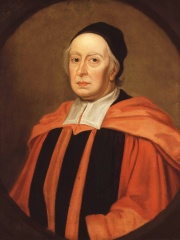
10. John Wallis (1616 - 1703)
With an HPI of 72.15, John Wallis is the 10th most famous British Mathematician. His biography has been translated into 47 different languages.
John Wallis (; Latin: Wallisius; 3 December [O.S. 23 November] 1616 – 8 November [O.S. 28 October] 1703) was an English clergyman and mathematician, who is given partial credit for the development of infinitesimal calculus. Between 1643 and 1689 Wallis served as chief cryptographer for Parliament and, later, the royal court. He is credited with introducing the symbol ∞ to represent the concept of infinity. He similarly used 1/∞ for an infinitesimal. He was a contemporary of Isaac Newton and one of the greatest intellectuals of the early modern mathematics.
People
Pantheon has 118 people classified as British mathematicians born between 1175 and 1987. Of these 118, 15 (12.71%) of them are still alive today. The most famous living British mathematicians include Ian Stewart, David Mumford, and Simon Donaldson. The most famous deceased British mathematicians include Ada Lovelace, Bertrand Russell, and John Napier.
Living British Mathematicians
Go to all RankingsIan Stewart
1945 - Present
HPI: 60.55
David Mumford
1937 - Present
HPI: 60.12
Simon Donaldson
1957 - Present
HPI: 55.98
John Lennox
1943 - Present
HPI: 55.82
Richard Taylor
1962 - Present
HPI: 53.82
Neil Sloane
1939 - Present
HPI: 50.92
James Maynard
1987 - Present
HPI: 50.21
Nigel Hitchin
1946 - Present
HPI: 50.16
Keith Devlin
1947 - Present
HPI: 49.75
Timothy Gowers
1963 - Present
HPI: 49.40
Simon Singh
1964 - Present
HPI: 49.30
Ben Green
1977 - Present
HPI: 48.95
Deceased British Mathematicians
Go to all RankingsAda Lovelace
1815 - 1852
HPI: 87.83
Bertrand Russell
1872 - 1970
HPI: 82.69
John Napier
1550 - 1617
HPI: 77.92
George Boole
1815 - 1864
HPI: 76.22
Alfred North Whitehead
1861 - 1947
HPI: 73.62
John Couch Adams
1819 - 1892
HPI: 73.12
Thomas Harriot
1560 - 1621
HPI: 73.03
Frank P. Ramsey
1903 - 1930
HPI: 72.55
Joan Clarke
1917 - 1996
HPI: 72.55
John Wallis
1616 - 1703
HPI: 72.15
George Green
1793 - 1841
HPI: 71.13
William Oughtred
1574 - 1660
HPI: 71.03
Overlapping Lives
Which Mathematicians were alive at the same time? This visualization shows the lifespans of the 25 most globally memorable Mathematicians since 1700.

